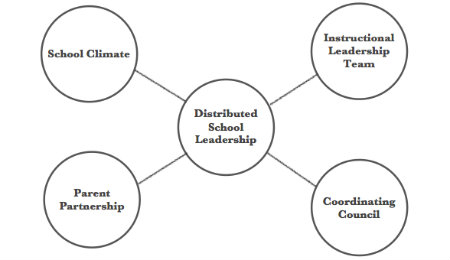How Leaders Can Shift Responsibility to the Right People
Shifting the Monkey: The Art of Protecting Good People from Liars, Criers, and Other Slackers
By Todd Whitaker
(Solution Tree, 2014 – Learn more)

The principalship can be a stressful position. This is my seventh year as an administrator, and I cannot remember a time in which more duties were being placed on us. Common Core, Response to Intervention, and new teacher evaluations are all expected to be implemented with success. All this, while also supervising a school, or even multiple buildings!

The central concept of Todd’s book is making sure that the right people are taking care of the responsibilities we’ve assigned them to do. These responsibilities, or “monkeys” in Whitaker’s play on the old saying, need to be shifted to their proper owners (backs) if school principals can expect to be available to address critical issues of learning and leadership.
Ask yourself 3 questions
To determine if there are monkeys that need to be shifted in our organizations, Whitaker suggests asking ourselves three questions:
- Where is the monkey?
- Where should the monkey be?
- How do I shift the monkey to its proper place?
There are many good suggestions in the book for how this could work in practice. To indicate their usefulness, I’ll highlight three instances in my experience where using this process helped ensure that no one person, myself included, was doing more than they should be.
1. Handle Problems When They Are Small
The author highly encourages school leaders to not wait for a small problem to go away. While he recognizes that these conversations can be uncomfortable, a little discomfort is preferable to letting it become a bigger issue later on. “It’s much easier to do nothing and wait for the problem to explode. Handling problems while they are still small, however, will lower the future monkey population” (p 65).
In my current position as an elementary principal, I have weekly meetings with some of the key leaders on our staff, such as the school counselor. Having these regular conversations helps me keep the pulse of the building, both academically and socially. We can strategize as a team about the best way to handle student or staff issues. In this way, we are able to “share the monkey” instead of any one person having to deal with it alone. While there are certain situations that only the principal should handle, being able to share and delegate some of the smaller issues frees us up for where we are more needed.
2. Make Decisions Based on Your Best People
While no school is immune to conflict or an imbalance in workload, how school leaders respond to certain issues can help keep our focus on what matters. For example, meetings can be monopolized by allowing conversations to carry on that have little to do with student learning. Where is this monkey? On those who want to engage in more important dialogue, but are not sure how to redirect everyone’s attention. Our best people can become frustrated in these circumstances.

Todd Whitaker
A way to shift this monkey is to highlight what is going well. We all want everyone to pay attention to what matters – that great math lesson we observed, or an innovative way to connect with parents. Whitaker says: “Telling people when they’re doing a good job spotlights the good employees, models good behavior, and gets the group in general to think about how they can prevent future problems” (p 141).
In our school, I use our weekly newsletter, the Friday Focus, to point out examples of excellence. We also celebrate successes before starting a staff meeting. Now where is the monkey? On those who have to grow as professionals, if they expect to get the attention they desire.
3. Never Do Something Someone Else Can Do
It is important to use this monkey-shifting strategy in the most positive sense. The idea is to distribute leadership tasks to those that could and should be doing them. As stated before, administrators have only so much time. In addition, “there are certain things only the leader can do, and that’s where you must focus your attention” (p 216). Our availability for these critical tasks can directly influence the success our school and students will experience.
One strategy for delegating responsibility to all staff is implementing school-wide focus groups. This idea comes from Regie Routman’s Literacy and Leadership Institute, which I attended in 2012.
In the beginning of the year, we survey staff about what building team they would like to serve on: Instructional Leadership, Coordinating Council (facility matters), School Climate (behavior/expectations), or Parent Partnership. Then we develop a list of responsibilities for each team along with expectations: informative minutes, meeting frequency, group goals.
One might think this is putting too much on teachers’ plates. But in my experience, most staff appreciate the responsibility handed to them to make decisions on behalf of the school, in an area of their interest.
Monkeys are everywhere
No one can lead a school alone. The more adept we become at identifying the problems and responsibilities – the monkeys – and shifting them appropriately, the better we can stay focused on essential tasks, with less stress. The larger benefit is that more people in our organizations are given duties that best suit their skills and interests. If we succeed in our monkey redistribution plan, the responsibility for school success will rest on many capable shoulders.
Shifting the Monkey by Todd Whitaker is an excellent guide for any administrator looking to better distribute the workload in schools.
Matt Renwick is a 15-year public educator who began as a 5th and 6th grade teacher in a country school outside of Wisconsin Rapids, WI. After seven years of teaching, he did time as a junior high dean of students, assistant principal and athletic director before becoming an elementary principal in Wisconsin Rapids. Matt blogs at Reading by Example, tweets @ReadByExample and writes for EdTech magazine. His book Digital Student Portfolios: A Whole School Approach to Connected Learning and Continuous Improvement was published in July 2014.

































